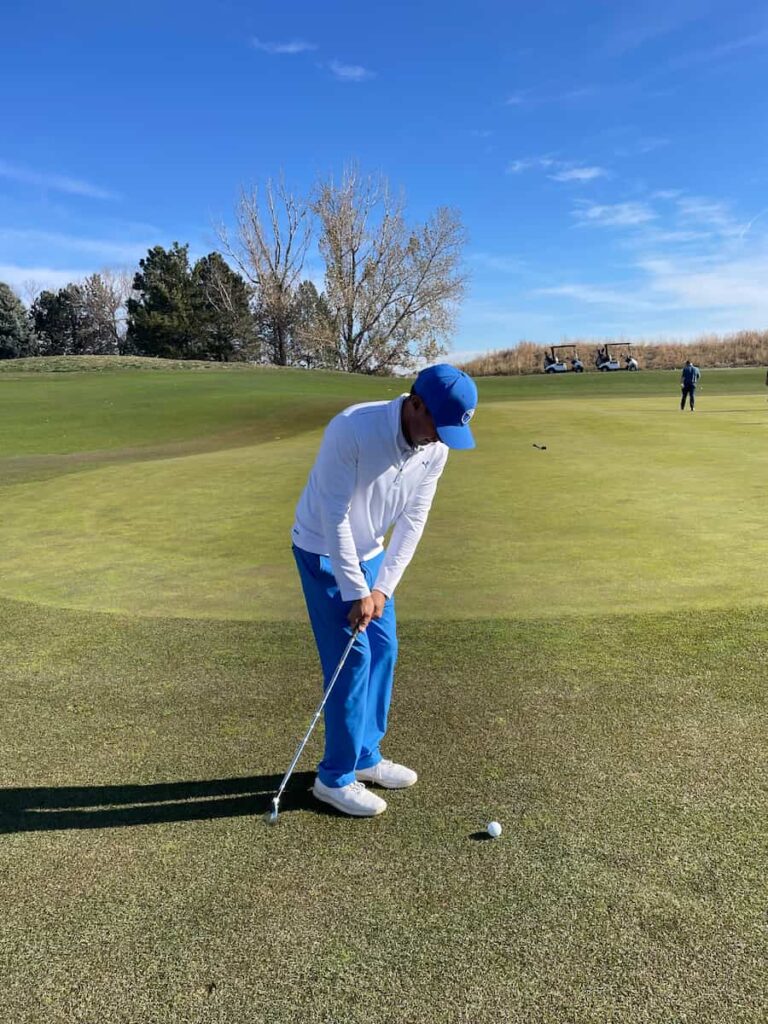The game of golf is a fusion of art and science, requiring players to exhibit finesse, precision, and strategy in each shot. One of the most delicate and nuanced shots in golf is the putt-chip, a blend of the putting and chipping strokes. It is a skill that can make or break a golfer’s game, especially when facing the challenges of undulating greens and tight pin positions.
What is a Putt-Chip?
A putt-chip is a golf shot that combines elements of both putting and chipping techniques. It is typically used when a golfer is just off the green, allowing for greater control and accuracy in getting the ball closer to the hole.
This shot involves using a putting stroke with a putter or a hybrid club, focusing on rolling the ball with minimal airtime. It’s an essential skill for golfers looking to save strokes and improve their short game performance.
When to Use the Putt-Chip
When You’re Near the Green
The putt-chip is a versatile shot that comes into play when you are just off the green, typically within 30 feet of the pin. It’s the ideal choice when your ball lies in the fringe, rough, or a closely mown area. Instead of risking an erratic chip or flop shot, the putt-chip allows for greater control and consistency.
When the Lie Is Favorable
Choose the putt-chip when you have a reasonably good lie and ample green to work with. This shot is less suitable for deep rough, bunkers, or awkward stances. A clean lie ensures a solid connection and predictability.
On Fast Greens
Fast greens pose a significant challenge for traditional chip shots. The putt-chip is a valuable weapon on slick greens, as it minimizes the chances of over-rolling the ball while still providing accuracy.
When You Need to Control Spin
The putt-chip imparts less backspin compared to a traditional chip or pitch shot. This makes it a preferred choice when you want to minimize the ball’s spin, ensuring a more predictable roll upon landing.
How to Execute the Putt-Chip
- Club Selection: Select the right club for the putt-chip. A putter or a hybrid club is the most common choice. Hybrid clubs are versatile because they allow for different lengths of strokes and lofts. Experiment with both to find what works best for your game.
- Stance and Setup: Your stance should resemble your putting stance, with your feet shoulder-width apart and the ball positioned centrally in your stance. Keep your weight slightly favoring your front foot, akin to your putting setup. Ensure a comfortable and light grip on the club.
- Stroke Technique: The putt-chip stroke is a blend of a putting and chipping motion. The key is to maintain a pendulum-like, rhythmical stroke. Keep your wrists firm, and let the shoulders and arms control the club’s movement. Ensure a smooth, unhurried acceleration through the ball.
- Focus on Landing Spot: Pick a spot on the green where you want the ball to land. This will largely depend on the amount of green between your ball and the pin. Focus on landing the ball in this spot to control the roll. The ball should ideally spend more time on the ground than in the air.
- Reading the Green: Just like a regular putt, understanding the contours and grain of the green is essential. Take the time to read the green and determine how it will influence the path and speed of your putt-chip.
Effective Practice Methods for Putt-Chips
Due to the rarity of needing the putt-chip over more traditional shots, hitting a putt-chip is a skill that you likely haven’t hit unless you had to in an earlier round. So the only way to prepare for it is to purposefully practice hitting it around the practice green.
- Chipping/Putting Green Practice: Allocate time on the chipping and putting greens to work on your putt-chip. Start with straightforward shots and gradually introduce more challenging lies and distances. Focus on achieving a consistent roll and developing a feel for various clubs.
- Target Practice: Place alignment sticks or tee pegs in the ground to create target zones for your putt-chips. Practice landing the ball in these areas to develop precision. Gradually, reduce the size of the target to enhance your accuracy.
- Distance Control: Mastering the distance control of a putt-chip is crucial. Set up targets at varying distances from the fringe and practice hitting the ball to these targets with different clubs. This will help you gauge the required stroke length for each distance.
- On-Course Application: Ultimately, practice on the golf course is essential. Apply what you’ve learned during practice rounds or casual games. The pressure of a real round will help you refine your putt-chip skills and build confidence.
The putt-chip is an invaluable skill in a golfer’s arsenal, offering precision and control near the green. By understanding when to use it, how to execute it, and dedicating time to practice, you can elevate your golf game and consistently save strokes. So, the next time you find yourself just off the green, embrace the challenge of the putt-chip, and watch your scores improve as your mastery of this artful shot grows.


